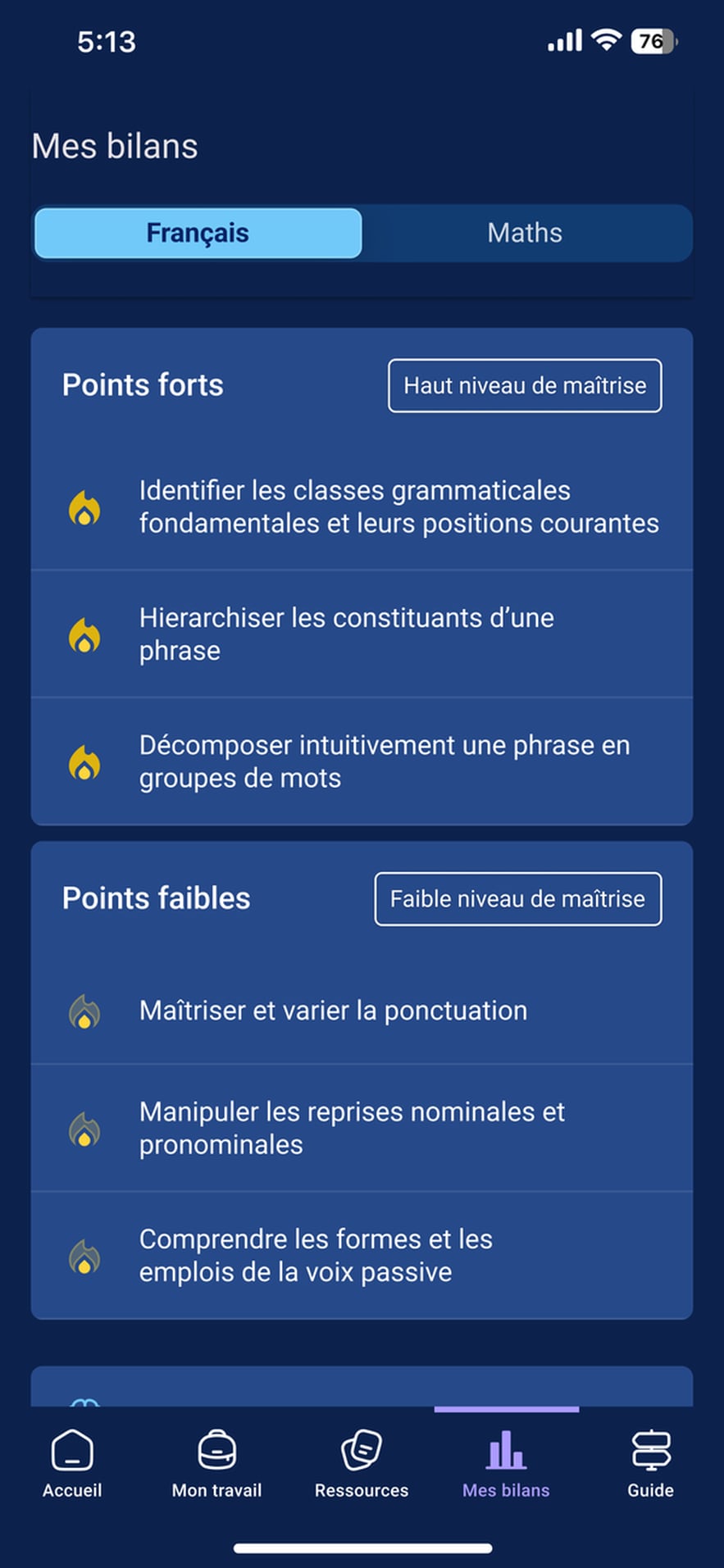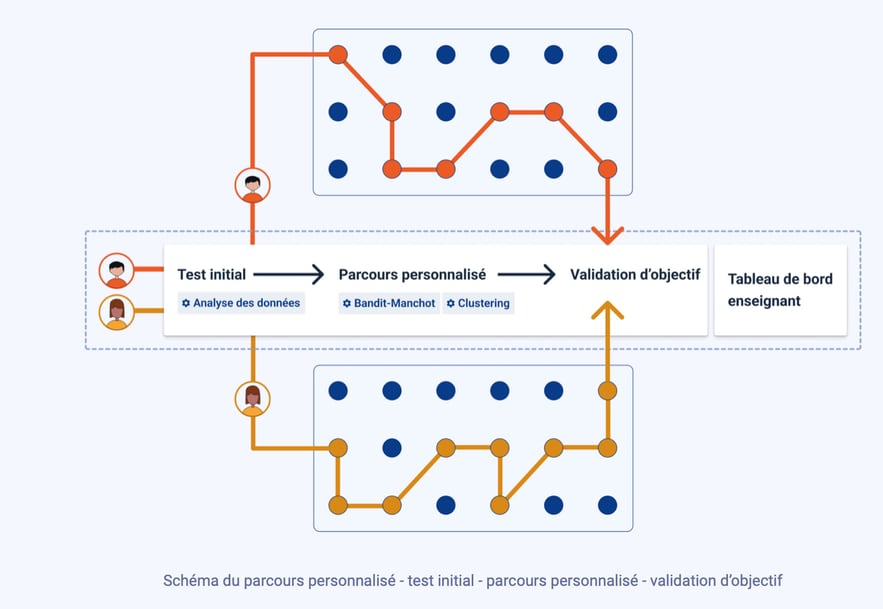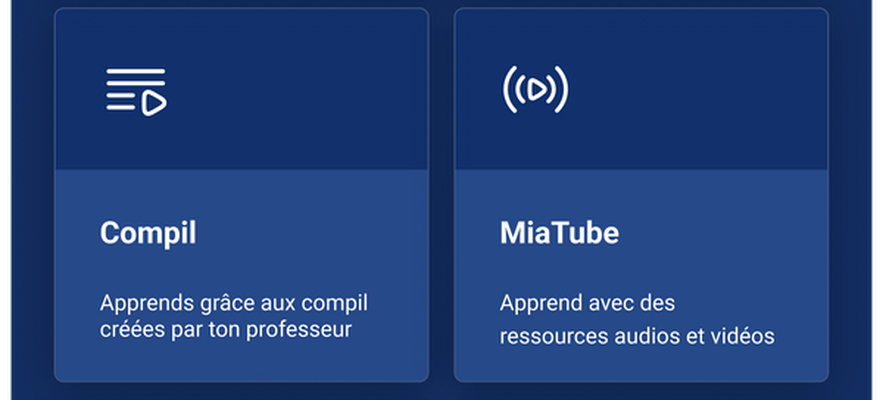Digital dashboard, ultra-personalized exercises, tailor-made learning path: 800,000 second-year students will use these new methods for learning French and mathematics in September 2024, thanks to an application called “Mia” (for “interactive and adaptive module”). “Our tool is a meeting between artificial intelligence (AI) and cognitive sciences”, described to L’Express Thierry de Vulpillières, the former director of educational partnerships at Microsoft and co-founder of EvidenceB, originally of this software retained by National Education, and which will be tested with 100,000 high school students from February.
MiaSecond’s interface
© / EvidenceB
20,000 adaptive exercises in mathematics and French
Born in 2017, EvidenceB is a French champion of “EdTech” (technology companies specializing in education), focusing on “adaptive learning”, this adaptation to the needs of each student thanks to computer programs. The start-up was recently named one of the five winners of the Tools Competition, in the Learning Science Research category, one of the most prestigious EdTech competitions in the world, thanks to another mathematics learning application. This solution, called Adaptiv’Math, was selected for New York students. In France, for second-year students, EvidenceB was preferred to two historic leaders in education, Hachette and Nathan.
MiaSecond, hosted in France at Docaposte, the digital subsidiary of the La Poste group, includes 20,000 adaptive exercises in mathematics and French, over 24 modules (12 for each subject), to do at home, online, on smartphone or on tablet. The exercises were designed by teachers, with the help of cognitive science researchers. EvidenceB also works directly with official programs, like the geometry modules provided by Bordas. Artificial intelligence was designed with the help of INRIA (National Institute for Research in Digital Sciences and Technologies) and Sorbonne University.

An example of an assessment of a student’s strengths and weaknesses as part of an evaluation by Mia second.
© / EvidenceB
AI builds a personalized path for each student
How is Mia used? At the start of their course, the high school student takes a first test to assess their level. It is here that the contribution of cognitive sciences is partly gauged, since this evaluation above all allows the tool to understand how this student thinks. From there, the AI takes over in order to offer him the most appropriate exercises to complete his progress. Many details are taken into account to constantly refine this choice. “The modules detect the difficulties of each student or which types of exercises suit them best, and thus find the best path to unlock them and help them progress,” explains the president of EvidenceB. The principle of its so-called “reinforcement” algorithm is to propose at each step a problem “neither too easy, so as not to bore, nor too difficult, so as not to discourage”. The difficulty will be just a little higher than the level reached by the student, for smooth progress.
The students will not be left alone to deal with the machine, we assure. “We have three other modes of use for the second class,” explains Thierry de Vulpillières. “As a duo in order to work in pairs with a classmate. A mode giving access to more than 300 tutorials, as well as a workshop mode in order to to work with teachers.”

The personalized journey diagram presented by EvidenceB.
© / EvidenceB
A tool for teachers
The teacher has a dashboard to evaluate the progress or weaknesses of each of his students, with alerts to draw his attention to blockages. “AI picks up more signals than a teacher can, seeing where the student has hesitated, where they are comfortable, which helps the teacher in their pedagogical decisions. It can particular to identify the gaps: sometimes you have to catch up on sixth form knowledge”, also argued the co-president of the start-up to Agence France-Presse (AFP).
Since the launch of ChatGPT, just over a year ago, this type of application has been deployed little by little. Thus, since March 2023, the Khan Academy, a non-profit organization which offers free education available online, uses a teaching assistant based on artificial intelligence (AI) called Khanmigo. Several American schools are already using it and, within a year, 11,000 students and teachers will use it in schools in the United States.
